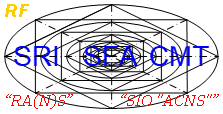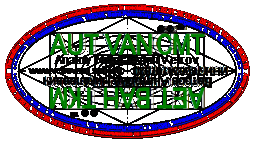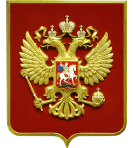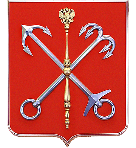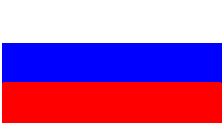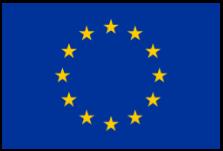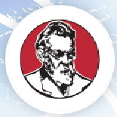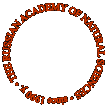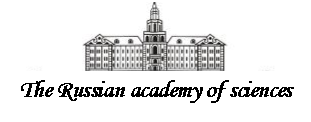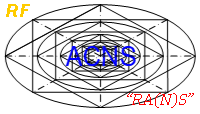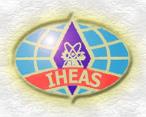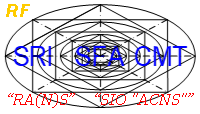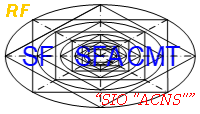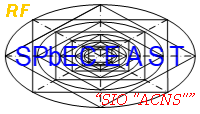“The IInd international scientific conference on applied sciences
"Improvement of quality of researches and developments in the modern organization:
cognitive approach"” (the 01st-31st of October 2016 y.)
(page 1 from 2 pages)
The applied scientific researches direction 2.
“Cognitive modeling in the applied technical sciences and technologies” (“NNT”)
The salutatory word
on the direction “Cognitive modeling in the applied technical sciences and technologies” (“NNT”)
of “SIO "ACNS"” (day time session)
The place of carrying out, room, date and interval of time
RF, Saint-Petersburg city, “SIO "ACNS"”, from the 01st of June 2016 y. 00:00:00 to the 01st of October 2016 y. 23:59:59
|
№
|
UDC
of scientific report
and (or) multimedia-presentation
|
First name,
Middle initials, Last name,
scientific degree, scientific rank,
(name of academy of sciences
or HEI which has issued diploma),
post in organization,
country, city, organization,
WWW address and E-mail address
of the author of scientific report
and (or) multimedia-presentation
|
Name (nomen)
of scientific report
and (or) multimedia-presentation
|
URL
of scientific report
and (or) multimedia-presentation
|
|
1.
|
UDC
|
Vetrov Anatoly Nikolaevich,
academician of (natural) sciences
(“SIO "ACNS"”),
The President
of “SIO "ACNS"”,
RF, Saint-Petersburg city,
“SIO "Academy of cognitive
natural sciences"”,
www.vetrovan.spb.ru,
vetrovan@nwgsm.ru
|
“The applied developments direction
“Cognitive modeling
in the applied technical sciences
and technologies” (“NNT”)
of “SRI "SFA CMT" of "RA(N)S"
named after V.N. Veniaminov” (part 1)”
(scientific report)
|
(download)
|
|
2.
|
UDC
|
Vetrov Anatoly Nikolaevich,
academician of (natural) sciences
(“SIO "ACNS"”),
The President
of “SIO "ACNS"”,
RF, Saint-Petersburg city,
“SIO "Academy of cognitive
natural sciences"”,
www.vetrovan.spb.ru,
vetrovan@nwgsm.ru
|
“The applied developments direction
“Cognitive modeling
in the applied technical sciences
and technologies” (“NNT”)
of “SRI "SFA CMT" of "RA(N)S"
named after V.N. Veniaminov” (part 2)”
(scientific report)
|
(download)
|
The salutatory word of the invited
on the direction “Cognitive modeling in the applied technical sciences and technologies” (“NNT”)
of “SIO "ACNS"” (day time session)
The place of carrying out, room, date and interval of time
RF, Saint-Petersburg city, “SIO "ACNS"”, from the 01st of June 2016 y. 00:00:00 to the 01st of October 2016 y. 23:59:59
The scientific reports and (or) multimedia-presentations on fundamental sciences did not give
The open performances with scientific reports and (or) multimedia-presentations
on sections of “SIO "ACNS"” (residents and non-residents)
3.2.1. The applied scientific researches section
“The applications of mining and metallurgy” (“SGM”)
Þ The applications of mining – the general questions of applications of mining,
usage of theory of technics and technology of development of deposits of firm minerals,
usage of theory of development of deposits of ores and ferrous metals,
usage of theory of development of deposits of ores and looses of color and rare metals and diamonds,
usage of theory of development of deposits of coal and combustible slates,
usage of theory of development of peat deposits,
usage of theory of development of deposits of building and road materials,
usage of theory of fire-resistant, ceramic, glass and mineral technical raw materials,
usage of theory of development of deposits of chemical and agricultural-chemical raw materials and salts,
usage of theory of development of deposits of precious and ornamental stones,
usage of theory of enrichment of minerals,
usage of theory of development of oil and gas deposits,
usage of theory of cognitive modeling technology in applications of mining;
Þ The applications of metallurgy – the general questions of applications of metallurgy,
usage of theory of metallurgical processes, usage of theory of metallurgical heating-technics,
usage of theory of manufacture of ferrous metals and alloys,
usage of theory of manufacture of nonferrous metals and alloys,
usage of theory of powder metallurgy, usage of theory of semi-conductors metallurgy,
usage of theory of rolling manufacture, usage of theory of drawing and hardware manufacture,
usage of theory of pipes manufacture, usage of theory of metallurgical science,
usage of theory of the technical analysis in metallurgy,
usage of theory of cognitive modeling technology in applications of metallurgy.
The place of carrying out, room, date and interval of time
RF, Saint-Petersburg city, “SIO "ACNS"”, from the 01st of June 2016 y. 00:00:00 to the 01st of October 2016 y. 23:59:59
The reporters on the applied scientific researches section
“The applications of mining and metallurgy” (“SGM”)
The scientific reports and (or) multimedia-presentations on fundamental sciences did not give
3.2.2. The applied scientific researches section
“The applications of sciences about wood and wood processing” (“SNL”)
Þ The applications of wood and wood-processing industry –
the general questions of applications of wood and wood-processing industry,
usage of theory of wood science, usage of theory of wood-cutting works,
usage of theory of wood transportation, usage of theory of wood-timber works,
usage of theory of technology and equipment for wood processing,
usage of theory of sawmill wood manufacture, usage of theory of manufacture of joiner-building products,
usage of theory of manufacture of plywood and plates, usage of theory of manufacture of blocks,
usage of theory of furniture manufacture, usage of theory of matches manufacture,
usage of theory of wooden container manufacture,
usage of theory of special wood-procesing manufactures,
usage of theory of pulp-paper industry,
usage of theory of cognitive modeling technology
in applications of wood and wood-processing industry;
Þ The applications of forestry economy – the general questions of applications of forestry economy,
usage of theory of forestry economy biology, usage of theory of soil science, usage of theory of agriculture,
usage of theory of wood land improvement, usage of theory of argicultural-chemistry,
usage of theory of plant science, usage of theory of forestry economy plants protection,
usage of theory of animal industry, usage of theory of veterinary science,
usage of theory of preparation of forestry economy production,
usage of theory of hunting and hunting economy, usage of theory of forestry economy,
usage of theory of economics and organization of forestry economy,
usage of theory of mechanization and electrification of forestry economy,
usage of theory of cognitive modeling technology in applications of forestry economy.
The place of carrying out, room, date and interval of time
RF, Saint-Petersburg city, “SIO "ACNS"”, from the 01st of June 2016 y. 00:00:00 to the 01st of October 2016 y. 23:59:59
The reporters on the applied scientific researches section
“The applications of sciences about wood and wood processing” (“SNL”)
The scientific reports and (or) multimedia-presentations on fundamental sciences did not give
3.2.3. The applied scientific researches section
“The applications of noosphere knowledge and technologies:
the (heavy) mechanical engineering, instrument making,
polygraphy, reprography and foto-cinema-technics,
easy and food-processing industry,
transport, architecture, construction and other branches” (“SNZT”)(*)
Þ The applications of mechanical engineering – the general questions of application,
usage of theory of machine engineering science and details of machines, usage of theory of machine-building materials,
usage of theory of technology of mechanical engineering, usage of theory of foundry manufacture,
usage of theory of forge-stamp manufacture, usage of theory of assembly manufacture,
usage of theory of cutting of materials, usage of theory of electrical-physical-chemical processing,
usage of theory of thermal and strengthening processing of materials,
usage of theory of manufacture of nonmetallic products,
usage of theory of machine-tool construction, usage of theory of robotics,
usage of theory of tool manufacture, usage of theory of mining mechanical engineering,
usage of theory of metallurgical mechanical engineering,
usage of theory of reactor constraction, usage of theory of turbine construction,
usage of theory of special power-engineering installations,
usage of theory of chemical and oil mechanical engineering,
usage of theory of locomotive construction and cariage building,
usage of theory of engine construction, usage of theory of motor car industry,
usage of theory of ship building, usage of theory of aircraft construction,
usage of theory of space technics and rocket production,
usage of theory of hoisting-transport mechanical engineering,
usage of theory of building and road mechanical engineering, usage of theory of communal (municipal) mechanical engineering,
usage of theory of tractor and agricultural mechanical engineering,
usage of theory of mechanical engineering for light industry,
usage of theory of polygraphical mechanical engineering,
usage of theory of mechanical engineering for food-processing industry,
usage of theory of mechanical engineering for trade and public catering,
usage of thery of household machines and devices, usage of theory of manufacture of weapon,
usage of theory of other branches of mechanical engineering,
usage of theory of cognitive modeling technology in applications of mechanical engineering;
Þ The applications of instrument making – the general questions of applications of instrument making,
usage of theoretical bases of instrument making,
usage of theory of general technology of production and equipment in instrument making,
usage of theory of designing and constructing of devices,
usage of theory of devices for measurement of electrical and magnetical sizes,
usage of theory of devices for measurement of mechanical sizes,
usage of theory of devices for measurement of time and frequency,
usage of theory of devices for measurement of structure and physical-chemical properties of substances and materials,
usage of theory of devices for thermal-technical and thermal-physical measurements,
usage of theory of devices for measurement of acoustical sizes and characteristics,
usage of theory of devices for measurement of optical and lighting-technical sizes and characteristics,
usage of theory of devices for measurement of ionisation radiations,
usage of theory of devices of not destroying control of products and materials,
usage of theory of general structural elements, usage of theory of units of measuring devices and systems,
usage of theory of cognitive modeling technology in applications of instrument making;
Þ The applications of polygraphy, reprography and photo-cinema-technics –
the general questions of applications of polygraphy, reprography and photo-cinema-technics,
usage of theory of polygraphy, reprography and photo-cinema-technics,
usage of theory of cognitive modeling technology
in applications of polygraphy, reprography and photo-cinema-technics;
Þ The applications of light industry – the general questions of applications of light industry,
usage of theory of textile industry, usage of theory of knitted industry,
usage of theory of clothing industry,
usage of theory of tanning industry, usage of theory of fur industry,
usage of theory of industry of artificial leather and film materials,
usage of theory of shoe industry, usage of theory of leather-haberdashery industry,
usage of theory of bristle-brush manufacture, usage of theory of accessories manufacture,
usage of theory of cognitive modeling technology in applications of light industry;
Þ The applications of food-processing industry – the general questions of applications of food-processing industry,
usage of theory of food raw materials and auxiliary materials,
usage of theory of processes and devices of food manufactures,
usage of theory of mixed-fodder industry,
usage of theory of bread-baking and macaroni industry,
usage of theory of confectionery industry, usage of theory of sugar industry,
usage of theory of starched industry,
usage of theory of barmy industry, usage of theory of brewing industry,
usage of theory of spiritous industry, usage of theory of high-alcohol drinks industry,
usage of theory of vinous industry, usage of theory of soft drinks industry,
usage of theory of canning, vegetable-drying and food-concentrat industry,
usage of theory of food-gustatory industry, usage of theory of tobacco industry,
usage of theory of meat and bird-fancier processing industry,
usage of theory of manufacture of eggs and egg products,
usage of theory of dairy industry, usage of theory of creamery industry,
usage of theory of cognitive modeling technology in applications of food-processing industry;
Þ The applications of architecture and construction (*) – the general questions of applications of architecture and construction,
usage of engineering-theoretical bases of construction, usage of theory of architecture,
usage of theory of building materials and products, usage of theory of building constructions,
usage of theory of technology of building-installation works,
usage of theory of technology of production of building materials and products,
usage of theory of machines, mechanisms, equipment and tool,
used in construction and industry of building-materials,
usage of theory of engineering researches in construction,
usage of theory of architectural-building designing,
usage of theory of regional lay-out, usage of theory of town-planning,
usage of theory of objects of construction and engineering support of construction objects,
usage of theory of tendencies, dependences and laws in architecture and construction,
usage of theory of cognitive modeling technology
with dynamic cloning, verification and subverification,
usage of theory of iterative cycle and technique of use of cognitive modeling technology,
usage of theory of parametrical cognitive models block for architecture and construction
(buildings and constructions based on cognitive disc, cognitive circle,
cognitive cylinder, cognitive cone and cognitive sphere),
usage of theory of representation ways of structure of cognitive model and problem environments:
formal classical of the 0th generation (logical and production models),
nonformal classical of the 0th generation (semantic network, frame network and ontology),
formal new of the 0th generation (calculus of theory of sets and corteges on domains
and innovative calculus of theory of sets and graphs),
nonformal new of the 0th generation (multilevel structural scheme
and multilevel encapsulated pyramids combining theory of graphs and theory of sets),
flat of the 1st generation (cognitive disc and cognitive circle),
volumetric of the 1st generation (cognitive cylinder, cognitive cone and cognitive sphere),
flat and volumetric of the 2nd generation (one-, two-, three-, four-, five- and more cognitive disc,
cognitive circle, cognitive cylinder, cognitive cone and cognitive sphere),
hybrid of the 3rd generation (combinations of the existing cognitive models),
usage of theory of algorithm of formation of cognitive model structure,
usage of theory of technique of research of cognitive models parameters,
usage of theory of algorithm of the analysis of a posteriori results of research,
usage of theory of adaptive automation means of architecture and construction
(automation means of formation and research of cognitive disc,
automation means of formation and research of cognitive cylinder,
automation means of formation and research of cognitive cone,
automation means of formation and research of cognitive sphere
automation means of formation and research
of one-, two-, three-, four-, five- and more cognitive sphere and others),
usage of theory of statistical substantiation of practical use of received results,
usage of theory of factors influencing to efficiency of architecture and construction of buildings and constructions,
usage of theory of organization and plan of carrying out of experiment,
usage of theory of parameters research of parametrical cognitive models block,
usage of theory of preliminary processing of a posteriori results of diagnostics,
usage of theory of choice of the statistical analysis methods of generated a posteriori data sets,
usage of theory of the analysis of productivity dynamics of construction,
usage of theory of the dispersion analysis, the regression analysis, the discriminant analysis, the cluster analysis,
multivariate scaling, the factor analysis, usage of theory of bibliographic lists;
Þ The applications of transport – the general questions of applications of transport,
usage of theory of railway transport, usage of theory of motor car transport,
usage of theory of water (sea) transport, usage of theory of air transport,
usage of theory of pipeline transport, usage of theory of industrial transport,
usage of theory of municipal transport, usage of theory of interaction of different types of transport,
usage of theory of mixed transportations, usage of theory of other types of transport,
usage of theory of cognitive modeling technology in applications of transport.
The place of carrying out, room, date and interval of time
RF, Saint-Petersburg city, “SIO "ACNS"”, from the 01st of June 2016 y. 00:00:00 to the 01st of October 2016 y. 23:59:59
The reporters on the applied scientific researches section
“The applications of noosphere knowledge and technologies:
the (heavy) mechanical engineering, instrument making, polygraphy,
reprography and foto-cinema-technics, easy and food-processing industry,
transport, architecture, construction and other branches” (“SNZT”)(*)
The scientific reports and (or) multimedia-presentations on fundamental sciences did not give
3.2.4. The applied scientific researches section
“The applications of scientific problems of agro-industrial complex” (“SNPAK”)
Þ The applications of agriculture and hunting economy –
the general questions of applications of agriculture and hunting economy,
usage of theory of agricultural biology, usage of theory of soil science, usage of theory of agriculture,
usage of theory of agricultural land improvement, usage of theory of agro-chemistry,
usage of theory of plant-growing, usage of theory of agricultural plants protection,
usage of theory of animal industry, usage of theory of veterinary science,
usage of theory of preparation of production of agriculture,
usage of theory of hunting and hunting economy, usage of theory of forestry economy,
usage of theory of economics and organization of agriculture,
usage of theory of mechanization and electrification of agriculture,
usage of theory of cognitive modeling technology in applications of agriculture and hunting economy;
Þ The applications of fish economy and aqua-culture – the general questions of applications of fish economy and aqua-culture,
usage of theory of biological resources of The World ocean and internal water reservoirs,
usage of theory of aqua-culture, usage of theory of fish culture, usage of theory of industrial fishery,
usage of theory of technical operation of fleet of fishing industry,
usage of theory of technical operation of fish seaports,
usage of theory of technology of processing of raw materials of water origin,
usage of theory of equipment for fish-processing industry,
usage of theory of cognitive modeling technology in applications of fish economy and aqua-culture;
Þ The applications of water economy (management) – the general questions of applications of water economy (management),
usage of theory of scientific bases of water economy (management), usage of theory of water-economy construction,
usage of theory of hydraulic-technical and hydraulic-ameliorative constructions,
usage of theory of irrigating and water-supply,
usage of theory of irrigating systems, usage of theory of drying systems,
usage of theory of sewage waters, their clearing and use,
usage of theory of quality of water, usage of theory of tests, measurements and control in water economy (management),
usage of theory of mechanization and automation in water economy (management),
usage of theory of complex use of water resources,
usage of theory of cognitive modeling technology in applications of water economy (management).
The place of carrying out, room, date and interval of time
RF, Saint-Petersburg city, “SIO "ACNS"”, from the 01st of June 2016 y. 00:00:00 to the 01st of October 2016 y. 23:59:59
The reporters on the applied scientific researches section
“The applications of scientific problems of agro-industrial complex” (“SNPAK”)
The scientific reports and (or) multimedia-presentations on fundamental sciences did not give
“The IInd international scientific conference on applied sciences
"Improvement of quality of researches and developments in the modern organization:
cognitive approach"” (the 01st-31st of October 2016 y.)
(page 1 from 2 pages)

